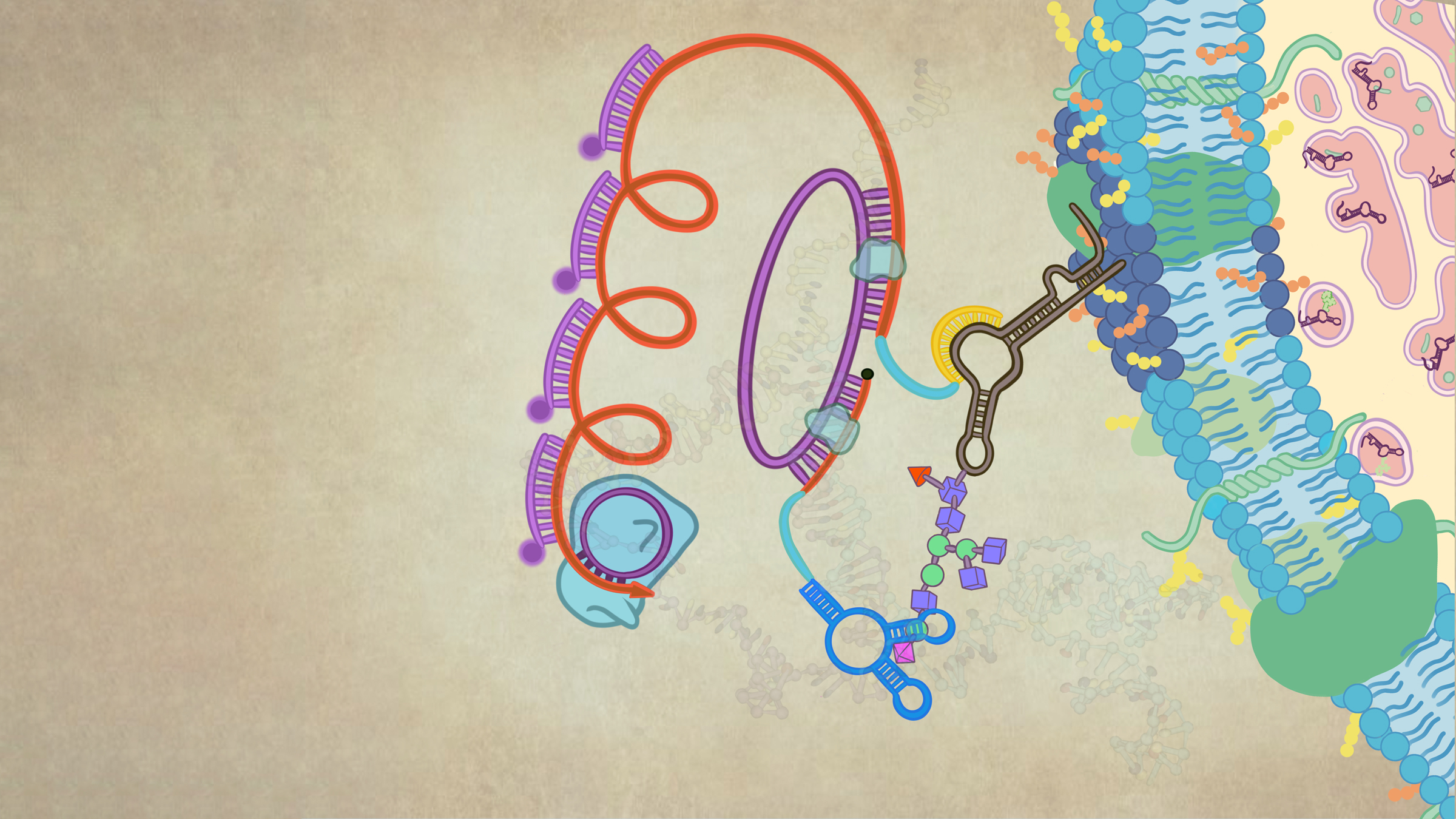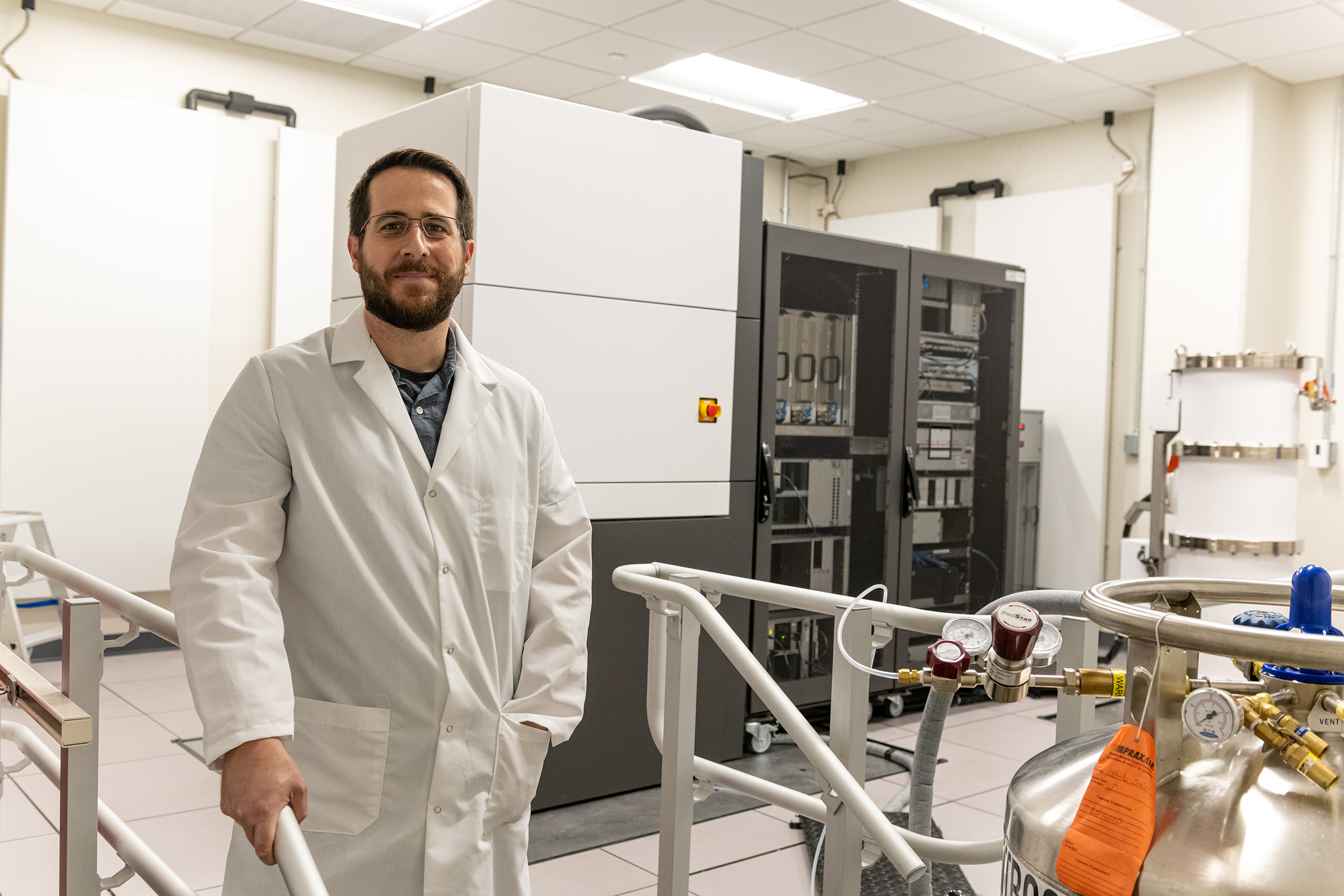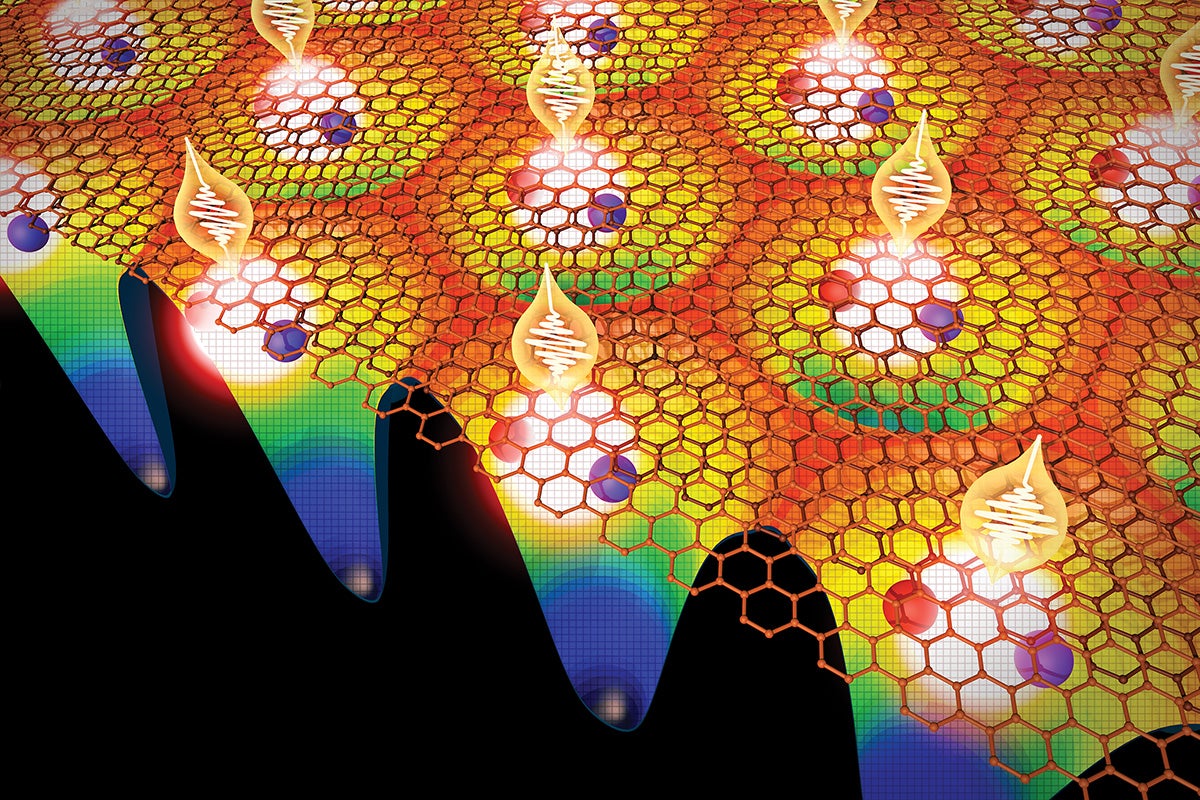New Imaging Tool Shines a Light on Role of GlycoRNAs in Cancer and Immunity
The previously unknown molecule was just discovered two years earlier and appears to play important roles in health.

Illustration of the ARPLA system detecting glycoRNAs. Credit: University of Texas at Austin.
Chemist Yi Lu was in the process of moving his lab from the University of Illinois Urbana-Champaign to The University of Texas at Austin in 2021 when another team of researchers made an astonishing discovery: a previously unknown sugar-coated biomolecule, called glycoRNA, is widely present in various cell types in a range of mammalian species, including humans. What’s more, it seemed to play an important role in the healthy functioning of the immune system. It was like living in a house all your life and discovering a room you’d never noticed before.
Excited by the new discovery, Lu and his team, which includes postdoctoral researcher Yuan Ma and graduate student Weijie Guo, jumped into action to develop a kind of flashlight to explore even further. Now, as they report in Nature Biotechnology, the team has developed a novel imaging tool called ARPLA that labels glycoRNAs with fluorescent tags, enabling the visualization of their spatial distribution in single cells.
The new method is highly sensitive, works in cells from any organism and can be customized to any type of glycoRNA. It’s a big step up from the original method used by Stanford researchers Ryan Flynn and Nobel Prize-winner Carolyn R. Bertozzi to discover glycoRNAs. That method requires cells to be grown in a specialized medium and isn’t able to map their distributions on or in cells.
“With further development and application of our tool, we can further understand glycoRNAs and discover their potential as biomarkers for diagnostic imaging and therapeutics for different types of diseases,” said Lu, professor and Robert J.V. Johnson-Welch Regents Chair in Chemistry at UT Austin.
Scientists have known for decades that other sugar-coated molecules called glycoproteins and glycolipids are involved in a wide range of essential biological functions, including cell signaling and immunity. They also play a role in cancer. With this new imaging tool, the researchers are starting to find that glycoRNAs likely play an important role, too. Unlike with the other sugar-coated molecules—which tend to increase in cancerous cells—as breast cancer cells become more malignant, the amount of glycoRNAs on their cell surfaces decrease.
“There are still many things that people who study glycoproteins and glycolipids in cancer and the immune system can’t explain,” said Ma. “If we can offer more insight into glycoRNAs, we may find that they are doing functions that the other biomolecules are not doing, and help finish the puzzle.”
Other authors on the paper are: Quanbing Mou, Xiangli Shao, Mingkuan Lyu, Valeria Garcia, Linggen Kong, Whitney Lewis, Carson Ward, Zhenglin Yang, Xingxin Pan and S. Stephen Yi.
The study was supported by the US National Institutes of Health, the Susan G. Komen Foundation, and the Robert A. Welch Foundation.
Share

Department of Molecular Biosciences


